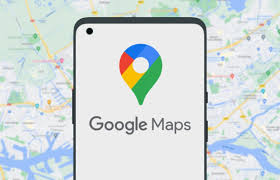Google Maps SEO: Boosting Your Local Business Online
In today’s digital age, having a strong online presence is crucial for the success of any local business. One powerful tool that can significantly impact your online visibility and attract more customers is Google Maps. With millions of users relying on Google Maps every day to find businesses and services near them, optimizing your presence on this platform has become essential. This is where Google Maps SEO comes into play.
What is Google Maps SEO?
Google Maps SEO refers to the process of optimizing your business listing on Google Maps to improve its visibility in local search results. When someone searches for a particular service or product in their area, Google uses a combination of factors to determine which businesses to display on the map. By implementing effective SEO strategies, you can increase your chances of appearing in those top results.
Why is Google Maps SEO important?
Increased visibility: A high-ranking position on Google Maps means more exposure for your business. Users are more likely to click on businesses that appear at the top of the map results, leading to increased traffic and potential customers.
Targeted audience: With Google Maps SEO, you can target users who are actively searching for products or services in your local area. This means you’re reaching an audience that is already interested in what you have to offer, increasing the likelihood of conversion.
Trust and credibility: Being listed prominently on Google Maps gives your business an added layer of credibility. Users tend to trust businesses that have a strong online presence and positive reviews.
Tips for optimizing your business listing on Google Maps:
Claim and verify your listing: Start by claiming ownership of your business listing on Google My Business (GMB). Verify it through the verification process provided by Google to gain full control over your listing.
Provide accurate information: Ensure that all information, including name, address, phone number (NAP), website URL, and business hours, is accurate and consistent across all online platforms. Inaccurate information can confuse potential customers and negatively impact your search rankings.
Choose relevant categories: Select the most appropriate categories for your business to help Google understand what your business is about. Be specific and choose categories that accurately represent your products or services.
Optimize your description: Craft a compelling and concise business description that includes relevant keywords. Highlight what makes your business unique and why customers should choose you over competitors.
Encourage customer reviews: Positive reviews can significantly impact your Google Maps ranking, so encourage satisfied customers to leave reviews on your GMB listing. Responding to reviews, both positive and negative, shows that you value customer feedback.
Add photos and videos: Visual content can make your listing more appealing to potential customers. Upload high-quality photos and videos that showcase your products, services, or the ambiance of your establishment.
Build local citations: Local citations are mentions of your business name, address, and phone number on other websites or directories. Building consistent citations across reputable platforms can boost your local search visibility.
Conclusion
In an increasingly competitive digital landscape, optimizing your presence on Google Maps through effective SEO strategies is essential for local businesses looking to attract more customers. By claiming and optimizing your Google My Business listing, providing accurate information, encouraging positive reviews, and building local citations, you can enhance your visibility in local search results and ultimately grow your business online. Invest time and effort into Google Maps SEO today to reap the benefits in the long run!
5 Essential Tips for Optimizing Google Maps SEO for Your Business
- Make sure your business is listed on Google My Business and that all of the information is accurate and up-to-date.
- Optimize your website for local SEO by including keywords related to your location in the content, page titles, meta descriptions, etc.
- Use Schema markup to provide more detailed information about your business such as address, contact info, opening hours, etc.
- Add a map to your website with an embedded Google Map so visitors can easily find directions to your business location(s).
- Encourage customers to leave reviews of your business on Google Maps and other review sites like Yelp or TripAdvisor.
Make sure your business is listed on Google My Business and that all of the information is accurate and up-to-date.
Make Your Business Shine on Google Maps: The Importance of Accurate Information on Google My Business
When it comes to Google Maps SEO, one crucial tip stands out among the rest: ensuring that your business is listed on Google My Business (GMB) and that all the information provided is accurate and up-to-date. This seemingly simple step can have a significant impact on your online visibility and help you attract more customers to your doorstep.
Google My Business is a free tool provided by Google that allows businesses to create a detailed profile, providing essential information such as business name, address, phone number (NAP), website URL, and business hours. By claiming and optimizing your GMB listing, you are essentially telling Google that you exist and are ready to serve potential customers.
The accuracy of the information you provide on GMB is crucial for several reasons. Firstly, it ensures that users searching for businesses like yours in your local area can find you easily. When someone searches for a specific product or service near them, Google uses the information from GMB listings to generate relevant results. If your information is incorrect or outdated, you risk missing out on potential customers who may turn to your competitors instead.
Secondly, having accurate information builds trust and credibility with both users and search engines. When users come across consistent and up-to-date details about your business across various platforms, including GMB, they are more likely to perceive you as a reliable and trustworthy establishment. This can lead to increased click-through rates and higher chances of conversion.
To ensure the accuracy of your GMB listing:
- Claim ownership of your listing: If you haven’t already done so, claim ownership of your business listing on Google My Business. This will give you full control over the information displayed and allow you to make updates whenever necessary.
- Double-check all details: Take the time to review every piece of information provided in your listing. Ensure that your business name, address, phone number, website URL, and business hours are all accurate and consistent with your other online platforms.
- Regularly update your listing: Keep your GMB listing up-to-date by promptly making any changes to your business information. If you move locations, change phone numbers, or modify your business hours, make sure to reflect these updates on your GMB profile.
By following these simple steps and ensuring the accuracy of your business information on Google My Business, you can boost your visibility on Google Maps and increase the chances of attracting local customers. Don’t underestimate the power of accurate and up-to-date information – it’s the foundation for a successful online presence in today’s digital world.
Optimize your website for local SEO by including keywords related to your location in the content, page titles, meta descriptions, etc.
Optimize Your Website for Local SEO: Harnessing the Power of Location Keywords
When it comes to Google Maps SEO, one crucial aspect that can significantly impact your local search rankings is optimizing your website for local SEO. By strategically incorporating keywords related to your location in your website’s content, page titles, meta descriptions, and other elements, you can improve your chances of appearing prominently in local search results. Here’s why this tip is essential and how you can make the most of it.
Relevance and Targeted Audience:
Including location-based keywords in your website’s content helps Google understand the geographic relevance of your business. When users search for services or products specific to their area, Google aims to provide them with the most relevant results. By incorporating location keywords, you increase the likelihood of attracting users who are actively looking for businesses like yours in your vicinity.
Improved Visibility:
Optimizing your website with location keywords increases its visibility in local search results. When potential customers search for businesses in a particular area, Google’s algorithms consider factors such as relevance and proximity to determine which websites to display. By including location-specific keywords throughout your website, you signal to Google that you are a relevant option for users searching within that area.
Strategies for Effective Implementation:
To optimize your website for local SEO using location keywords, consider the following strategies:
- Keyword Research: Conduct thorough keyword research to identify relevant terms that include both your business offerings and location. Tools like Google Keyword Planner can help you discover popular and effective location-based keywords.
- Content Optimization: Incorporate location keywords naturally within your website’s content while ensuring it remains informative and engaging for visitors. Avoid overstuffing keywords as it may negatively impact user experience and search rankings.
- Page Titles and Meta Descriptions: Include location keywords in your page titles and meta descriptions to provide search engines with clear signals about your business’s geographic relevance. Craft compelling titles and descriptions that entice users to click on your website.
- URL Structure: Consider incorporating location keywords within your website’s URL structure, particularly for location-specific pages or landing pages.
- Local Landing Pages: Create dedicated landing pages for each location you serve, optimizing them with relevant location-based keywords. This can help you target specific areas and attract local customers.
- Schema Markup: Implementing schema markup, such as LocalBusiness schema, can provide search engines with structured data about your business, including its name, address, phone number, and geographic coordinates.
Remember that while optimizing your website for local SEO is important, it should be done in a way that feels natural and enhances the user experience. Focus on providing valuable content and ensuring that all optimization efforts align with Google’s guidelines.
By optimizing your website with location keywords strategically, you can improve your visibility in local search results, attract targeted customers in your area, and ultimately grow your business online. Harness the power of location-based SEO today to increase your chances of success in the competitive digital landscape!
Use Schema markup to provide more detailed information about your business such as address, contact info, opening hours, etc.
Boost Your Google Maps SEO with Schema Markup
When it comes to optimizing your business listing on Google Maps, every detail matters. One effective tip to enhance your visibility and provide more detailed information about your business is by utilizing Schema markup. By implementing Schema markup on your website, you can ensure that search engines like Google understand and display key details about your business accurately.
What is Schema Markup?
Schema markup is a structured data vocabulary that helps search engines interpret the content of web pages more effectively. It provides additional context and specific information about different types of content, such as events, products, recipes, and businesses. By using Schema markup, you can provide search engines with a clear understanding of the important details related to your business.
How Does Schema Markup Benefit Your Business Listing on Google Maps?
Using Schema markup for your business’s address, contact information, opening hours, and other relevant details can provide several advantages:
Enhanced Visibility: When search engines understand the specific details of your business through Schema markup, they can display this information prominently in search results. This increased visibility can attract more potential customers who are actively searching for businesses like yours.
Accurate Information: Schema markup ensures that the information displayed about your business is accurate and consistent across different platforms. This helps eliminate any confusion or discrepancies that may arise from incomplete or outdated data.
Rich Snippets: With the help of Schema markup, search engines can generate rich snippets for your business listing on Google Maps. Rich snippets include additional information such as reviews, ratings, photos, and even special offers or events associated with your business. These eye-catching elements make your listing stand out among competitors and increase the likelihood of attracting clicks from users.
How to Implement Schema Markup for Your Business Listing?
Implementing Schema markup may require technical expertise or assistance from a web developer familiar with structured data implementation. Here are some steps to get started:
Identify Relevant Schemas: Determine which Schema types are most relevant to your business. For example, the “LocalBusiness” schema is commonly used for local businesses and provides a wide range of properties to describe your business details.
Add Schema Markup: Incorporate the appropriate Schema markup into the HTML code of your website’s pages. Include properties such as business name, address, phone number, opening hours, and any other relevant information that you want search engines to recognize.
Test and Validate: Use Google’s Structured Data Testing Tool or other similar tools to validate your Schema markup. This step ensures that search engines can correctly interpret the structured data on your website.
By leveraging Schema markup, you can provide search engines with comprehensive information about your business, increasing its visibility and accuracy on Google Maps. Take advantage of this powerful SEO tip to optimize your online presence and attract more customers to your doorstep!
Add a map to your website with an embedded Google Map so visitors can easily find directions to your business location(s).
Enhance Your Website with an Embedded Google Map for Easy Directions
When it comes to optimizing your business’s online presence, incorporating a map on your website can significantly enhance the user experience and boost your local SEO efforts. By embedding a Google Map, you provide visitors with a convenient way to find directions to your business location(s) effortlessly.
Why should you add an embedded Google Map to your website?
Improved user experience: By adding a map with embedded Google Maps functionality, you eliminate the need for visitors to leave your website to search for directions. This seamless integration enhances the overall user experience, making it easier for potential customers to find and reach your physical location(s).
Convenience and accessibility: With an embedded Google Map, visitors can quickly access interactive maps directly on your website. They can zoom in, zoom out, switch between map and satellite view, and even use street view to get a better understanding of their surroundings.
Mobile-friendly navigation: In today’s mobile-driven world, many users rely on their smartphones for navigation. By including an embedded Google Map on your website, you cater to this mobile audience, allowing them to easily access directions on their devices without having to switch between apps or websites.
How can you add an embedded Google Map to your website?
Adding an embedded Google Map is a straightforward process that requires minimal technical expertise. Here’s how you can do it:
- Go to the official Google Maps website (maps.google.com) and search for your business location.
- Once you’ve found the correct location, click on the “Share” button.
- In the pop-up window that appears, select the “Embed a map” tab.
- Customize the map size by adjusting the dimensions according to your website’s layout.
- Copy the generated HTML code provided by Google.
- Paste the HTML code into the desired section of your website’s HTML or content management system (CMS).
Remember to place the embedded map prominently on your website, ideally on a dedicated “Contact” or “Location” page. This ensures that visitors can easily find it when they need directions.
Conclusion
By adding an embedded Google Map to your website, you enhance the user experience and provide visitors with a convenient way to find directions to your business location(s). This small yet impactful addition can significantly improve customer satisfaction and engagement. Take advantage of this simple tip to make navigation easier for your website visitors and increase foot traffic to your physical location(s).
Encourage customers to leave reviews of your business on Google Maps and other review sites like Yelp or TripAdvisor.
Harness the Power of Reviews: Boost Your Google Maps SEO
In today’s digital age, online reviews play a vital role in shaping consumer decisions. When it comes to Google Maps SEO, encouraging customers to leave reviews of your business can have a significant impact on your online visibility and reputation. Not only does it help potential customers make informed choices, but it also signals to search engines that your business is trustworthy and relevant. Here’s why you should actively seek customer reviews on platforms like Google Maps, Yelp, or TripAdvisor.
Enhanced credibility:
When users come across your business listing on Google Maps or other review sites, positive reviews act as social proof that your business delivers quality products or services. Customers are more likely to trust businesses that have a substantial number of positive reviews. This credibility can give you an edge over competitors and increase the chances of attracting new customers.
Improved search rankings:
Reviews are a crucial factor for search engines when determining the ranking of local businesses in search results. Positive reviews indicate that your business is well-regarded by customers and can influence search algorithms to favorably position your listing. Higher rankings mean better visibility and increased organic traffic.
Valuable feedback:
Customer reviews provide valuable insights into what customers appreciate about your business and areas where improvements may be needed. By actively monitoring and responding to reviews, you demonstrate that you value customer feedback and are committed to delivering excellent experiences. This engagement not only strengthens customer relationships but also helps build a positive brand image.
How to encourage customer reviews:
- Ask for feedback: Train your staff to politely ask satisfied customers if they would be willing to leave a review about their experience.
- Provide incentives: Consider offering small incentives such as discounts or exclusive offers for customers who leave a review.
- Make it easy: Include links or QR codes on receipts, business cards, or your website that direct customers to review platforms.
- Respond promptly: When customers take the time to leave a review, show your appreciation by responding promptly and addressing any concerns raised.
Important considerations:
While it’s essential to encourage positive reviews, it’s equally crucial to maintain authenticity and integrity. Avoid incentivizing or fabricating reviews, as search engines and consumers can easily detect dishonest practices. Encourage customers to share their genuine experiences, whether positive or negative, as it demonstrates transparency and helps you identify areas for improvement.
In conclusion, customer reviews are a powerful tool for enhancing your Google Maps SEO strategy. By actively encouraging customers to leave reviews on platforms like Google Maps, Yelp, or TripAdvisor, you can boost your credibility, improve search rankings, and gain valuable feedback. Embrace the power of customer feedback today and watch your business thrive in the digital world!




